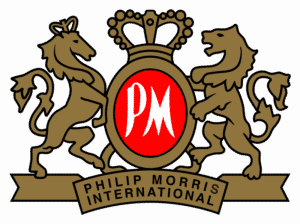The tobacco industry has been around for many years dating back to the 19th century. W. Duke and Sons was one of the earliest cigarette companies and was started in 1881. When cigarettes were first produced, they were blends of Turkish leaf and bright tobacco and could only be made by a trained cigarette maker at a rate of four cigarettes per minute. A man by the name of James Bonsack developed a cigarette-making machine that could make 120,000 cigarettes a day. In 1890 the American Tobacco Company was founded and controlled 90% of the nations cigarette manufacturing, but in 1911 the Supreme Court ruled that they violated the Sherman Anti-Trust Act and forced the company to break up. From this break up the Big Four emerged and included R.J. Reynolds, Ligget and Myers, Lorillard, and American. During this time  period, slow tobacco markets were a large problem. Things got to the point that the Interstate Tobacco Growers Protection Association threatened to hold all of the tobacco until the price demands were met. When World War one came, the demand for tobacco went up drastically, but after the war prices went back down.
period, slow tobacco markets were a large problem. Things got to the point that the Interstate Tobacco Growers Protection Association threatened to hold all of the tobacco until the price demands were met. When World War one came, the demand for tobacco went up drastically, but after the war prices went back down.
The tobacco industry would start to face many problems so changes had to be made to help deal with the problems. Advertising come on to the scene and proved to be very important to the industry. One very popular form of advertising used by American Tobacco Company was the use of baseball cards. Also slogans were adopted such as “I’d walk a mile for a camel”. Figures such as Camel Joe and Marlboro Man also came into play.
One of the biggest challenges the cigarette industry has faced has been the link of cigarettes to lung cancer and other diseases. In hopes of eliminating the harmful effects of cigarettes companies introduced new filtered cigarettes that would try to eliminate some of the harmful effects. In lieu of this new health concern, the surgeon general ordered warnings be placed on all cigarette boxes, informing people of the dangers of cigarette smoking. Presently, companies are promoting ad campaigns to inform and prevent people from smoking.
The tobacco industry is a very competitive industry despite having only a few key players. Phillip-Morris is by far the worlds leading tobacco distributor and paid $4.5b in taxes last year and is the largest single taxpayer in the country. The market values of RJ Reynolds, American Brands, and Loews Corp. are very similar. This similar market value allows then the ability to easily take over another company and increase their market value. The tobacco industry also competes with the government and the public at times. For example, no longer legal advertising in sports such as Nascar which tobacco companies were major sponsors. The only competition U.S. tobacco companies face globally is the  United Kingdom. Three of the major five companies are located there.
United Kingdom. Three of the major five companies are located there.
Technology has also started to be a problem for tobacco companies and created competition. Contraband companies exist that sell counterfeit cigarettes over the Internet and gain major profits. Legitimate cigarette distributors are now beginning to sell cigarettes online to keep up with the importance of Internet shopping. Genetically engineered tobacco plants have also come into play that are more health friendly to smokers.
The tobacco industry has a very large impact on the economy. The industry produces jobs in manufacturing and farming. The tobacco industry also spends up to $6b on advertising, while the government spends $250m a year to counteract tobacco advertising with anti-tobacco advertising. While the tobacco industry raises a large $11b in tax funds, it does not come close to paying for the government Medicare payments to cover tobacco-related illness. Tax- payers pay $16b for Medicare. The Gross Domestic Product for the tobacco industry is $21.1b. To give you an idea on how much a tobacco company makes; In 2001 Phillip Morris’ sales were $89,927m.
The tobacco industry is constantly changing due to a few key and major factors. Technology has made it available for people purchase cigarettes online. Internet sales open the door for minors to purchase, which is very illegal, but also bring large profits to vendors. Internet prices are also in most cases much cheaper. Genetically engineered tobacco plants are also technological advances that tobacco companies’ hope will have less nicotine.
Socio-Economic trends are also major factors in the changing tobacco industry. Much of society has an anti-smoking attitude, but the number of smokers has not made large decrease in recent years. The most prominent change in social trends lies with youths. Young people make up a large portion of the smoking population. This increase in youth smoking perhaps has prompted a lot of the anti-smoking campaigns.
The legal environment is perhaps one of the most influential trends in the tobacco industry. Litigation risks for the industry are on the rise because of the many class action lawsuits that have been taking place. It is interesting to note that from the 1950’s to 1994 the tobacco industry did not pay any damages to plaintiffs claiming death and disease from smoking. Since then only 13 cases have ended in verdicts against tobacco companies.
Marketing practices have recently started to change for the tobacco industry. In 1998, a tobacco agreement was signed that changed the way cigarettes were advertised, promoted, and sold in the United States. The settlement stopped form of advertising such as t-shirts, billboards, stadium signs, and backpacks with a tobacco brand name. These were said to be directed toward youth. Minorities and women are also said to be large targets for the tobacco industry. Magazine advertisement is also another popular marketing tactic. The tobacco settlement has no bans or restrictions dealing with magazines unless the ad targets youths through promotion, advertising, or marketing.
The future of the tobacco industry is very interesting. There are a lot of thing happening such as the banning of smoking in some restaurants and large price increases that could potentially have an impact on the tobacco industry. The anti-smoking campaigns will also prove to be a challenge to the industry. It will be very interesting to see how the tobacco industry deals with the challenges of the future and if the industry prospers or begins to slowing decline.
